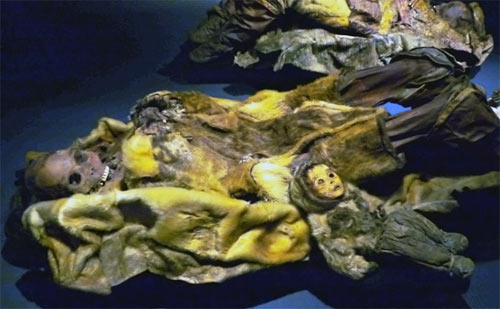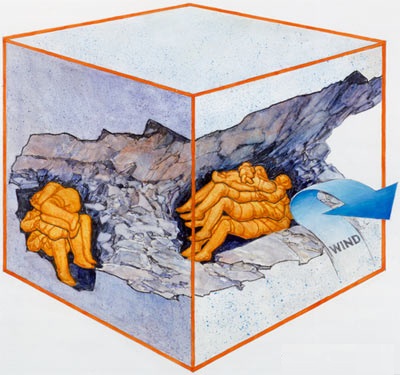His little face still looks upwards, as if forever waiting for his mother. From the moment he was discovered, the photograph of the small Inuit baby touched hearts worldwide, gracing magazines and news stories. Initially mistaken for a doll, it was soon revealed that the figure was the body of a six-month-old baby boy. He had been buried alive with his already deceased mother, likely because there was no one left to care for him.
The Discovery of the Inuit Baby
The tiny Inuit baby was found alongside a two-year-old boy and six women of varying ages, all buried in two separate graves beneath a rock overhang protecting a shallow cave. The sub-zero temperatures and dry, dehydrating winds naturally mummified the bodies, offering a unique opportunity to learn about the Greenland Inuit from half a millennium ago. These are the oldest preserved remains ever found in the region.

Unearthing History
Dating back to around 1475 AD, the mummies were discovered purely by chance at an abandoned Inuit settlement called Qilakitsoq. Two brothers, hiking in the area, grew curious about a stack of rocks and made the significant find. Qilakitsoq, meaning “place of the small sky,” is located on the Nuussuaq Peninsula, along the shore of Uummannaq Fjord in northwestern Greenland.
The Burial Arrangement
The bodies were stacked on top of each other with layers of animal skin between them, divided into two graves a meter apart. The first grave contained three women, a two-year-old boy, and the six-month-old baby, while the second grave held three women. DNA studies revealed two sets of related mummies and one unrelated individual, possibly married into the family.

Life Before Death
The mummies were well-nourished before death, living on a diet of 75% seafood and 25% from plants and animals, like reindeer. Along with the bodies, seventy-eight items of clothing, mostly made from seal skin, were found.
Health and Disabilities
The two-year-old boy had Down’s Syndrome and might have been left to die of exposure due to his condition—a common practice among the Inuit, as the society could not support those unable to contribute to food gathering, clothing making, or shelter building. One older woman, found to be deaf and blind, suffered from various conditions, including a malignant tumor.
Inuit Tattoos
Infrared photographs revealed that five of the six women had facial tattoos. These black lines were on their foreheads, arched over their eyebrows, with some having a dot on their foreheads and lines beneath their chins. Tattoos were a customary practice among adult Inuit women, with variations reflecting different tribal origins.
The Mystery of Their Deaths
The mystery of their deaths has intrigued scientists for over three decades. Inuit never buried women and children separately from men, making the two graves containing only women and children puzzling. An early theory suggested they drowned in a umiaq accident, explaining the absence of men. However, studies of the remains debunked this, as there was no evidence of drowning or a simultaneous death cause. Researchers remain uncertain about the exact cause of death for most individuals. The only confirmed fact is that the little Inuit baby was buried alive. Inuit custom sometimes dictated suffocating or burying a child alive if no woman could care for it after its mother’s death.
Insights and Unanswered Questions
The Greenland Mummies have illuminated the everyday lives of Inuit people from over 500 years ago, providing fascinating insights into the culture and survival methods of Greenland’s indigenous people in the fifteenth century. Yet, for this particular group of women and children, many questions remain unanswered.




